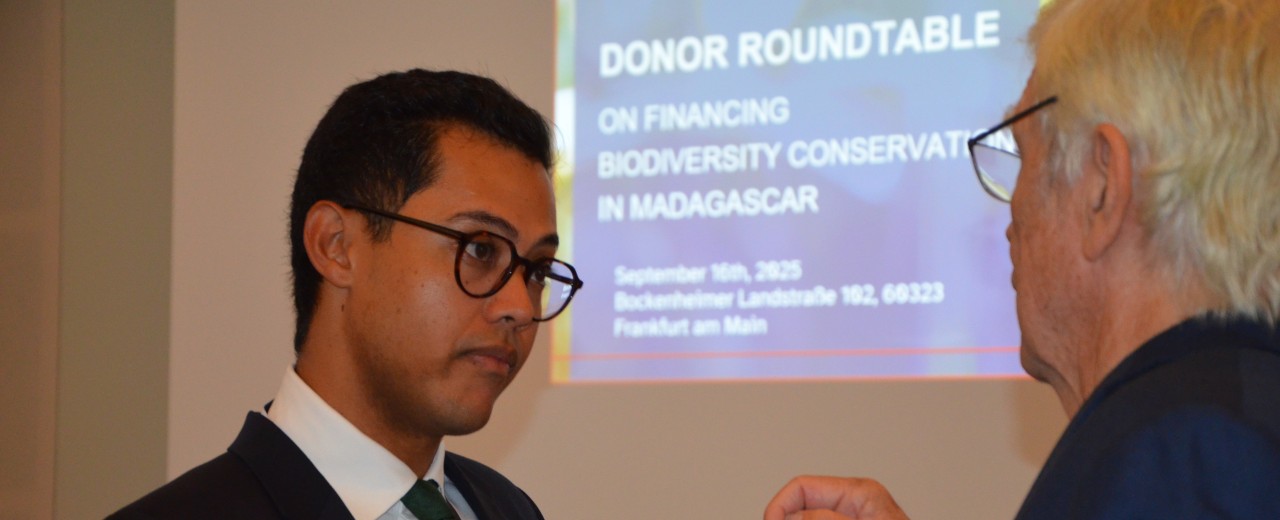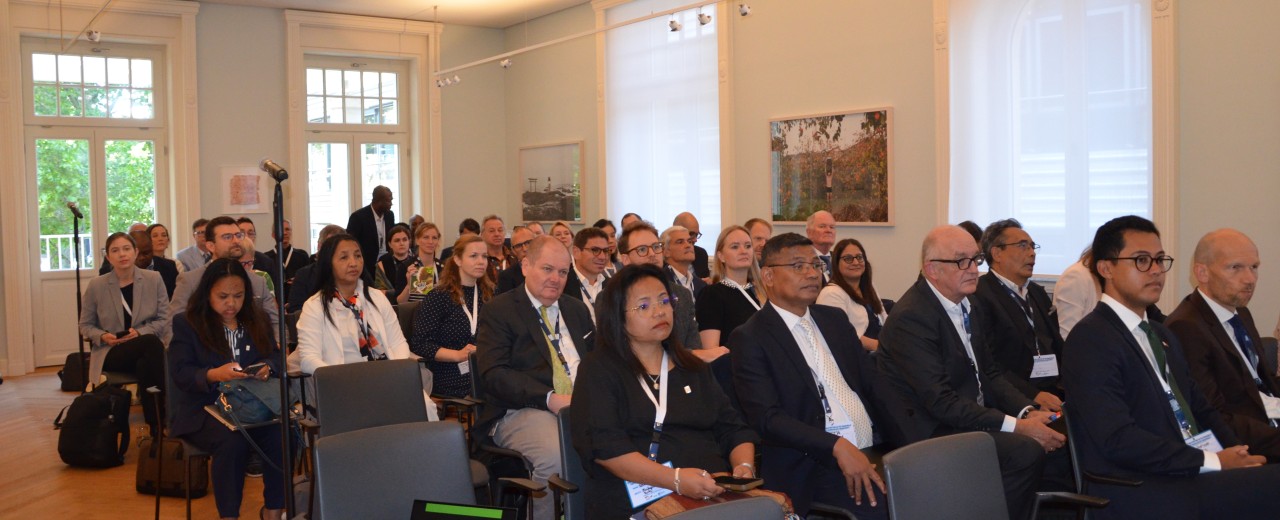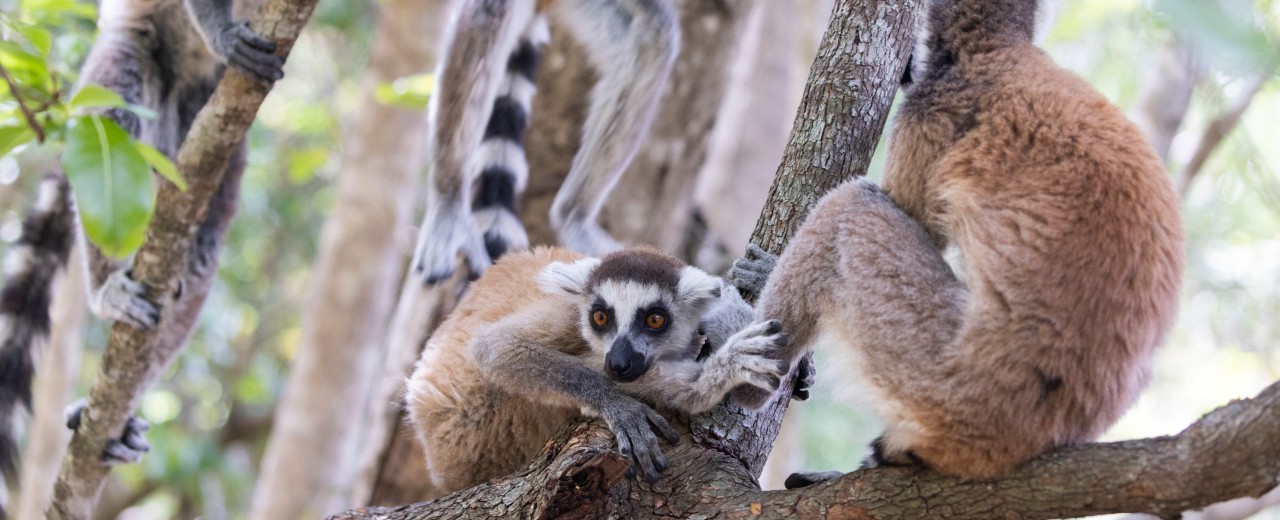News from 2025-09-17 / KfW Development Bank
Madagascar – a biodiversity hotspot
In search of innovative financing mechanisms for the green sector

In mid-September, the Foundation for Protected Areas and Biodiversity in Madagascar (FAPBM) and KfW Development Bank hosted a donor roundtable on biodiversity conservation in Madagascar. The invitation was taken up by the Madagascan Minister for the Environment and Sustainable Development, Max Fontaine, as well as representatives from BMZ and GIZ, philanthropic foundations, bilateral and multilateral organisations – EU, AFD, science, nature conservation, NGOs – and leading companies in the field of sustainability. Around 60 participants attended in person, with around 40 more joining online.

The aim of the “Roundtable on Financing Protected Areas in Madagascar” was, on the one hand, to highlight the global importance of Madagascar's unique biodiversity and, on the other hand, to take stock of the current situation: What is currently being implemented? What are the needs and funding gaps? And what innovative financing mechanisms could be used in Madagascar? And – as Dr Silvia Morgenroth from the BMZ also pointed out – in times of stagnating or declining budgetary resources, how can additional funds, for example from private sources or business initiatives, be raised for biodiversity conservation? The FABPM is addressing these questions and challenges.
FABPM - Fondation pour les Aires Protégées et la Biodiversité de Madagascar
The FAPBM is a private foundation under Madagascan law that represents an innovative mechanism for financing protected areas in Madagascar. The foundation has capital invested in international markets. The income from this capital is used to finance running costs in protected areas in Madagascar. This means that the capital remains untouched, which ensures the sustainability of financing for biodiversity. In addition, the FAPBM uses project funds to finance investments, particularly in neighbouring communities. After 20 years of existence, this mechanism has proven to be effective – it is able to ensure sustainable and predictable financing for protected areas. The FAPBM has succeeded in acquiring a large number of public and private donors and is currently the largest environmental foundation in Africa. Nevertheless, the current capital stock is not yet sufficient to cover the entire financing needs of the protected areas.
Madagascar – Land of lemurs and baobab trees
Madagascar, the fourth largest island in the world, is a true paradise for nature lovers and a hotspot of biodiversity. Around 80% of the animal and plant species found here are endemic, meaning that they cannot be found anywhere else on earth. This unique flora and fauna has earned Madagascar the titles ‘Baobab Island’ and ‘Lemur Land’.

Not only entertaining lemurs, but also a variety of chameleons, magnificent cranes and dazzling sunbirds populate the island with its impressive baobab trees, which stand like giant bottles on the land. These trees are not only a symbol of Madagascar, but also an important part of the ecosystem, as they store water and provide habitat for many animals.
German development cooperation can look back on 70 years of successful cooperation with Madagascar. The current portfolio amounts to 200 million euros – Germany is the largest donor in the green sector.
Deforestation, agriculture and climate change threaten flora and fauna
Unfortunately, Madagascar's biodiversity is under threat. Deforestation, agriculture and climate change are putting pressure on these unique habitats. But there is hope: many organisations and local communities are actively working to protect this unique natural environment. Against the backdrop of alarming forecasts of biodiversity loss, an increase in extreme weather events, the global economy's dependence on key ecosystem services and the vulnerability of global economic infrastructure to extreme weather events – as described in the World Economic Forum's Global Risks Report 2025 – protecting Madagascar's natural resources is becoming a global necessity. Sustainable tourism, public-private partnerships and nature conservation projects are attempting to preserve Madagascar's heritage for future generations. Investments in environmental protection in Madagascar also open up economic opportunities and promote new partnerships, e.g. with research institutions. By investing in protected areas, companies combine economic interests with ecological and social responsibility. They strengthen their corporate image, meet regulatory requirements, support the achievement of climate targets and promote innovation.
However, funding for protected areas remains insufficient to ensure their sustainability and their impact on the sustainable development of local communities.
At the end of the event, everyone agreed that the goal of raising awareness among key stakeholders about the importance of protecting Madagascar's biodiversity, strengthening the network among committed stakeholders, and exchanging ideas for identifying financing mechanisms had been achieved. Examples include the use of carbon credits (CO2 certificates) based on new Madagascan legislation, initial experiences with biodiversity credits (species protection certificates), the mobilisation of private foundation funds and green bonds. The challenges are enormous, but the participants are optimistic about the opportunities for nature conservation financing in Madagascar – for fauna, flora and people.
Fondation pour les Aires Protégées et la Biodiversité de Madagascar

Share page
To share the content of this page with your network, click on one of the icons below.
Note on data protection: When you share content, your personal data is transferred to the selected network.
Data protection
Alternatively, you can also copy the short link: https://www.kfw-entwicklungsbank.de/s/enzBWrMC.DS1A
Copy link Link copied